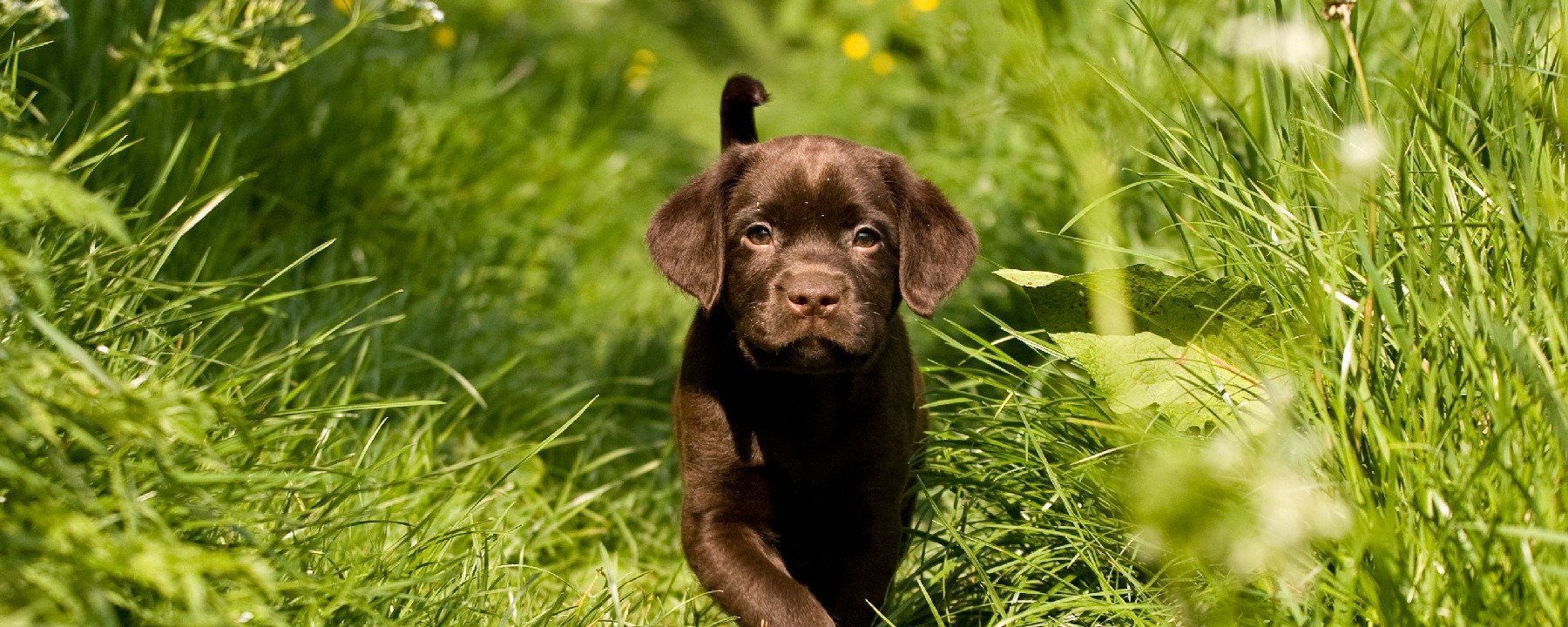
Labrador Retriever
Posted: 02/15/2023 | BY: Content Writer
Labrador Retriever Breed Profile
Pet Profile
Perfectly suited as a trusty gundog or faithful family pet.
- Medium to large (53cm to 60cm)
- Typically weighing between 25kg and 36kg
- 10 to 12 years life expectancy
The Labrador Retriever is the most popular dog breed in the United States, mostly due to its even temperament, high intelligence, and clean, attractive appearance.
There are two distinct types of Labrador Retrievers: American and English. Both are considered large breed dogs. The American version is slightly taller and thinner than its cousin from across the pond. Both types of dogs share the same temperament, projected lifespan, and health concerns.
As one of the most popular gundogs and family pets, the Labrador Retriever makes a great canine companion thanks to its easy-going and gentle manner.
As a dog of many talents, Labradors are often also used as therapy dogs, to aid the blind and to help the police. Labradors are reliable, trainable, and extremely loyal.

History of Labrador Retrievers
The ancestor of the modern Labrador came from the Canadian province of Newfoundland, originating as water dogs that would swim into icy lakes to retrieve ducks.
Labrador retrievers were originally bred for hunting waterfowl. Their webbed paws and oiled coat make them well suited for swimming, and their high fetch drive also earned them their modern-day name of “retriever”.
Characteristics of Labrador Retrievers
Labrador retrievers are large, high-energy dogs with short double coats that can be in several colors: the yellow lab, chocolate lab, and black lab. They are deep-chested dogs with wide heads and long snouts.
Labrador retrievers are known for being kind dogs that are great with children and other pets. Their eagerness for life is joyous to be around and they bond with all the family members.
Labs have lots of energy and require lots of exercise making them the perfect companion for hiking, running, swimming, and outdoor activities. They instinctually often love fetch because of their retriever background.
Labrador retrievers are easy to train and very intelligent dogs. They are often used as working dogs as search and rescue dogs, drug and explosive detection, and as guide dogs.
When adopting a lab puppy, it is advised to attend obedience training to ensure they become the best family pet you could ask for.
Adopting A Labrador Retriever From A Breeder Or Rescue
When adopting a labrador retriever puppy, it is always recommended to adopt from a reputable breeder by the American Kennel Club or Labrador Retriever Club.
Lab puppies can also often be found in rescues or shelters because they are the most popular dog breed.
You can also adopt Labrador Retrievers as service dogs who have undergone training sessions to graduate as support animals. They can be trained for various things like guide dogs for the blind or assisting someone with epilepsy during a seizure.
Exercise And Nutrition of Labrador Retrievers
The Labrador Retriever is a very active dog and needs a substantial amount of daily exercise. Your dog will require at least two hours of walking every day to stay healthy and happy.
Training a Labrador is a necessary, but fairly painless, exercise and you can begin training your Labrador puppy as soon as you bring them home.
It is recommended that you feed your Labrador Retriever two high-quality meals every day. The amount you feed your dog is dependent on their size and age, so always read the label and consult your veterinarian if you are unsure.
They do tend to love their food, so it’s important to watch their food and exercise balance carefully!
Common Health Problems And Illnesses Of Labrador Retrievers
Labrador Retrievers do have their share of health issues, which is why it’s a good idea to take out insurance for your Labrador Retriever while they’re still a puppy.
Hip and elbow dysplasia occurs when a hip or elbow joint develops irregularly. This is far more common in purebred Labrador Retrievers than those of mixed stock, but their active nature, combined with their long and fragile legs, can make this a severe problem.
Osteoarthritis or degenerative joint disease (DJD), is a condition that is commonly seen in Labrador Retrievers. The of this condition include decreased movement or occasional lameness. Symptoms can be treated effectively with medicine or surgery.
Labradors are also at risk of developing luxating patella, also known as bow-shaped knee joints.
If your pet is suffering from lameness as a result of the condition, surgery is recommended by vets to restore normal alignment of the muscles and enable them to walk comfortably again.
Lipomas and growths are also common in Labradors. It’s a good idea to check your pet for these whilst you’re grooming them. They aren’t usually painful and commonly aren’t something to worry about. However, sometimes it is necessary to surgically remove these lumps if they are causing your pet physical discomfort.
Otitis externa is an inflammation of the ear canal, and is a condition which can occur for a variety of reasons, including allergies, excess hair, or moisture becoming trapped in the ears.
If your dog is scratching their ears more frequently or if you can see any redness or swelling in the external parts of the ear canal, speak with your veterinarian for advice around ear infections in dogs and how to treat them.
Fun Facts About Labrador Retrievers
- Labrador Retrievers have webbed feet, meaning they have a natural talent for swimming.
- Labrador Retrievers can also run extremely fast, and have been known to reach up to 12 mph in just three seconds!
- A single litter of Labrador Retriever puppies can include black, yellow, and chocolate puppies!
- Labrador Retrievers are the most commonly used breed for assistance dogs due to their strong desire to please.
- Due to their strong sense of smell, Labradors have even been trained to sniff out and recognize the early stages of cancer.